Content
E-Guitar and IP
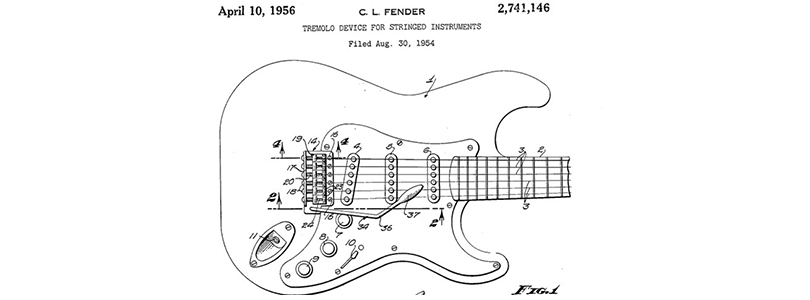
US2741146A: Leo Fender´s patent for the tremolo system of his ‘Stratocaster’. The design of this electric guitar was quite revolutionary in 1954.
IP´n guitars
The most monumental misjudgement in the history of music has long been the stuff of legend: in 1962, a manager at the Decca record company refused to sign a young band called ‘The Beatles’ on the grounds that guitar bands were ‘on the way out’. The heyday of guitar bands was only just beginning. And the electric guitar is still here. It has outlived synthesisers, loops, samples and apps and is still the most important instrument in popular music today.
The (pre)history of the electric guitar begins in 1796 in Markneukirchen in the Vogtland region of Saxony with the birth of Christian Friedrich Martin. The talented craftsman first learnt from his father, then from the famous guitar maker Johann Georg Stauffer in Vienna. In 1833, Martin emigrated to the USA and founded his own guitar workshop. This company, which is still owned by his descendants today, provided the decisive impetus for the development of modern steel-stringed guitars. Martin developed a robust form of top bracing, the so-called ‘x-bracing’, which could withstand the higher tension of the steel stings, as well as the body shapes that are still common today.
Guitars were just not loud enough
Although guitars with steel strings are significantly louder than classic ‘Spanish’ guitars with gut or nylon strings, they are still comparatively quiet in comparison with other instruments. In 1916, Martin developed guitars with a larger and therefore louder resonating body, the massive ‘dreadnoughts’ (named after a contemporary battleship class). But the other instruments of hip jazz were still much louder, especially the brass instruments. Resourceful engineers such as George D. Beauchamp (1899-1941) therefore developed resonators and guitar bodies made of metal. But the guitar still had to play a secondary role in big bands as a rhythm instrument.
Steel strings were the prerequisite for the development of the electric guitar. Their vibrations can influence the field of a magnet, cause an alternating electrical voltage in a coil wound around it through induction and generate a low signal that is fed to an amplifier.
Hawaii and horseshoes
Technology progressed: from the 1920s onwards, guitar makers experimented with electronic amplification options. In collaboration with musical instrument maker Paul Barth and entrepreneur Adolph Rickenbacher, Beauchamp succeeded in building the first electromagnetic pickup in 1931. It consisted of a coil of copper wire wound around six pole heads (one for each guitar string) and opposing magnets in the shape of a horseshoe - the ‘horseshoe pickup’.
Beauchamp and his partners were now able to build the first electrically amplified guitar. It was modelled on the Hawaiian or ‘lap steel’ guitars popular at the time, which were played on the knees, usually with a ‘slide’. The design with the guitar neck and the small round body made of cast aluminium, which carried the pickup, was vaguely reminiscent of a frying pan. And so it went down in music history in 1932: the ‘Frying Pan’, the world's first electric guitar.
Important guitar patents
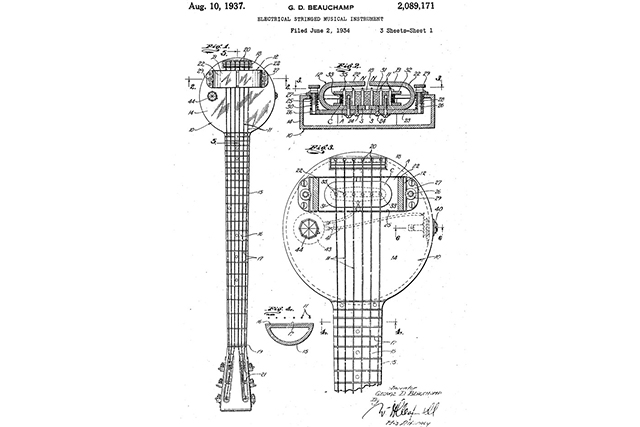

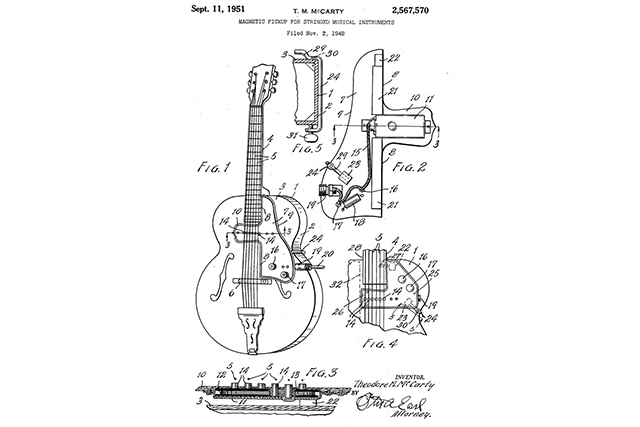

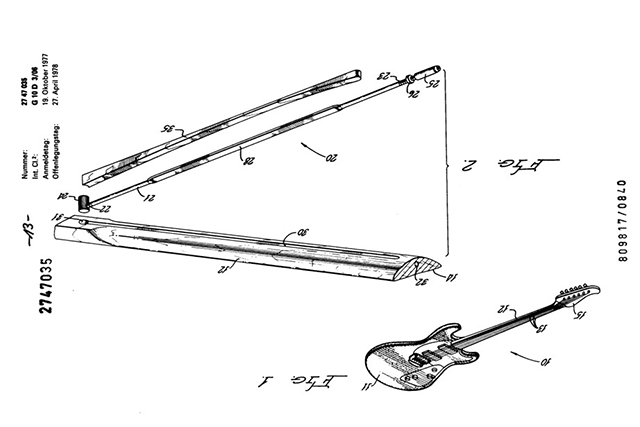
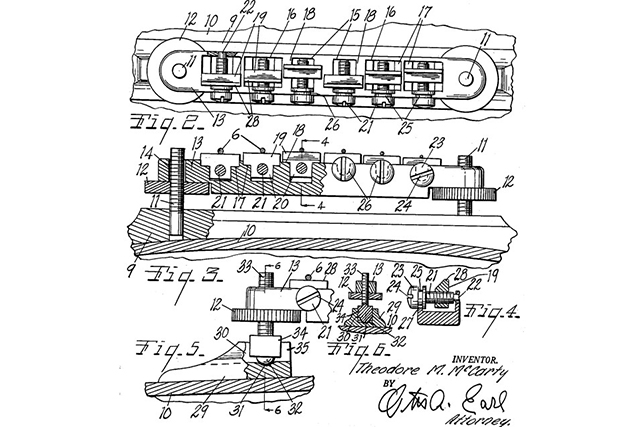
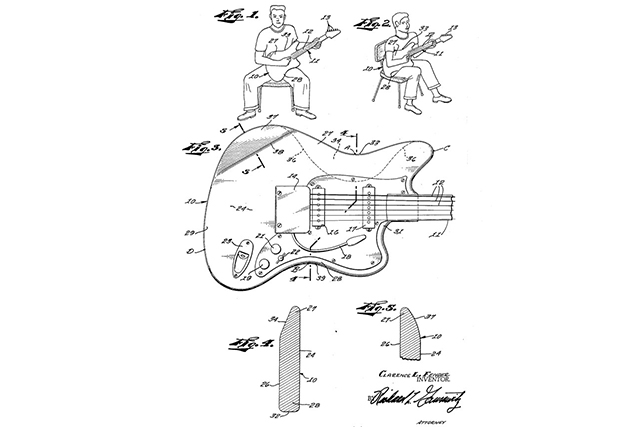

The ‘frying pan’ paved the way for rock
In 1934, George Beauchamp applied for a patent for the ‘Frying Pan’. However, the examiners allegedly had doubts as to whether this device could actually be used to make music. Adolph Rickenbacher is therefore said to have sent some guitarists to the patent office in Washington, D.C. to play something on the ‘frying pan’ for the examiners. The patent was finally granted in 1937 ( ![]() US2089171A).
US2089171A).
After some back and forth, Beauchamp and his partners named the company that offered the ‘Frying Pan’ for sale ‘Rickenbacker’ - a popular name at the time thanks to Adolph Rickenbacher's relative Eddie, a famous World War I flying ace.
Incidentally, Rickenbacker still builds high-quality electric guitars and basses today, which became popular in the 1960s, especially with the Beatles (guitar band!). The distinctive design of the classic Rickenbacker models has hardly changed for more than half a century and is protected by trade marks (see below).
The ‘Spanish’ guitar gets electrified
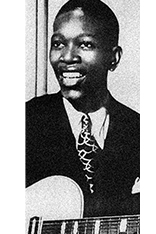
Charlie Christian established the electric guitar as a solo instrument (1940)
However, it was a traditional competitor who was the first to industrially produce an electric guitar in large series in 1936: the Gibson ES-150. Orville H. Gibson (1856-1918) was the first to transfer the so-called archtop construction of violins to the guitar and mandolin. The company he founded became Martin's most important competitor in steel string construction.
One of Gibson's most important innovations was the installation of an adjustable metal rod in the neck of the guitar, which simultaneously reinforced it and enabled corrections to be made to the curvature and string action. These ‘truss rods’ were adopted and further developed by the competition (see Leo Fender's ![]() DE2747035A1) and are still used today in practically every guitar with steel strings.
DE2747035A1) and are still used today in practically every guitar with steel strings.
Gibson's ES-150 (ES for ‘Electric Spanish’), still with a traditional wooden resonance body, was now the first guitar that could be played in an ensemble on an equal footing thanks to the amplification option. Charlie Christian in particular contributed to its popularity, establishing the guitar as a solo instrument in Benny Goodman's big band from 1939 onwards.
The pickup type of the ES-150 (see ![]() US2145490A) has since been referred to as the ‘Charlie Christian pickup’. It was a single coil. The main types of electromagnetic pickups are single coil and humbucker. The single coil was to become an essential element of the instruments that really kick-started the success story of Rock and the electric guitar after the end of the war.
US2145490A) has since been referred to as the ‘Charlie Christian pickup’. It was a single coil. The main types of electromagnetic pickups are single coil and humbucker. The single coil was to become an essential element of the instruments that really kick-started the success story of Rock and the electric guitar after the end of the war.
Leo Fender changes the music world
Leo Fender (1909-1991) initially experimented with ‘lapsteel’ guitars before turning to the design principle that still dominates the electric guitar today: the ‘solid body’ guitar, which no longer has a resonating body, but only an almost arbitrarily shaped solid body that accommodates the tailpiece and electronics.
In 1952, Fender launched the first ‘solid body’ electric guitar on the market. Today it is known as the ‘Telecaster’ ( ![]() USD164227,
USD164227, ![]() US2573254A). And with the ‘Precision Bass’, Fender immediately launched the next groundbreaking innovation: the first electric bass guitar, ‘solid body’, easy to carry and with frets. Now the guitar bands could get started...
US2573254A). And with the ‘Precision Bass’, Fender immediately launched the next groundbreaking innovation: the first electric bass guitar, ‘solid body’, easy to carry and with frets. Now the guitar bands could get started...
The design of this bass guitar was revolutionary and almost futuristic at the time. Fender then adapted its design for his next ‘solid body’ guitar, which he brought onto the market in 1954. The Fender ‘Stratocaster’ is probably the most famous, most built and most copied electric guitar in the world. It has three single coils ( ![]() US2455575A), two deep cutaways (body cut-outs to make it easier to reach the high frets) and Fender's patented tremolo system (
US2455575A), two deep cutaways (body cut-outs to make it easier to reach the high frets) and Fender's patented tremolo system ( ![]() US2741146A, actually a vibrato), also known as the ‘howling hook’. Beauchamp had already designed a lever for changing the string tension in his application
US2741146A, actually a vibrato), also known as the ‘howling hook’. Beauchamp had already designed a lever for changing the string tension in his application ![]() US2152783A from 1936. The tremolo lever was a favourite of Jimi Hendrix, perhaps the most famous of all ‘Strat’ players.
US2152783A from 1936. The tremolo lever was a favourite of Jimi Hendrix, perhaps the most famous of all ‘Strat’ players.
Fender also set new standards with its guitar amplifiers; the circuit diagram of the ‘Bassman’ inspired the first amps from the later famous manufacturers Vox and Marshall.
Trademarked design for famous guitars
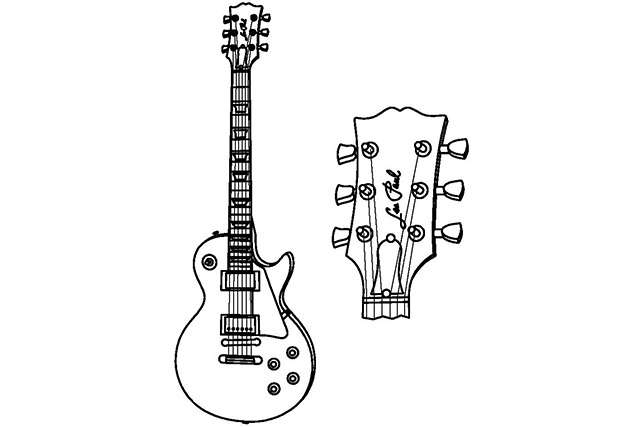
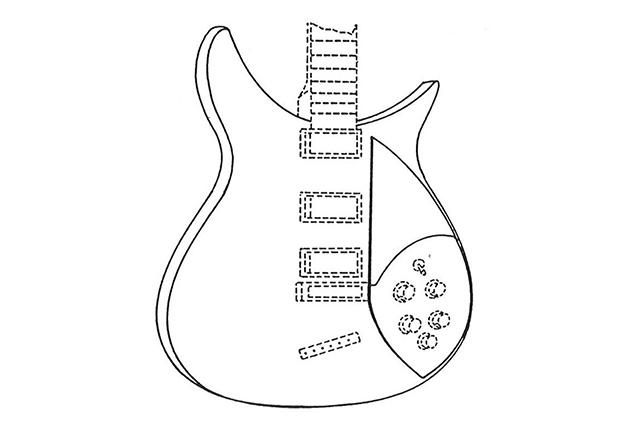

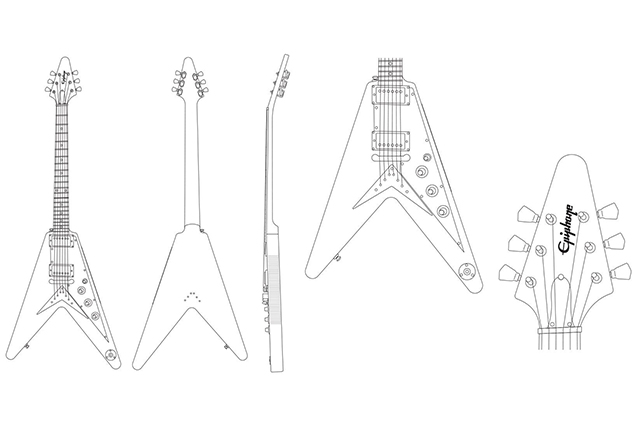
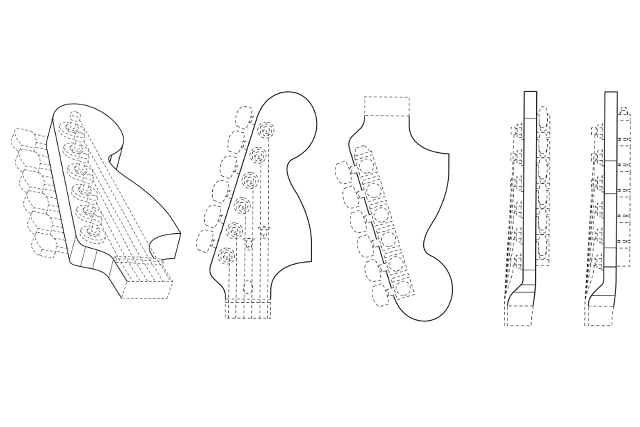
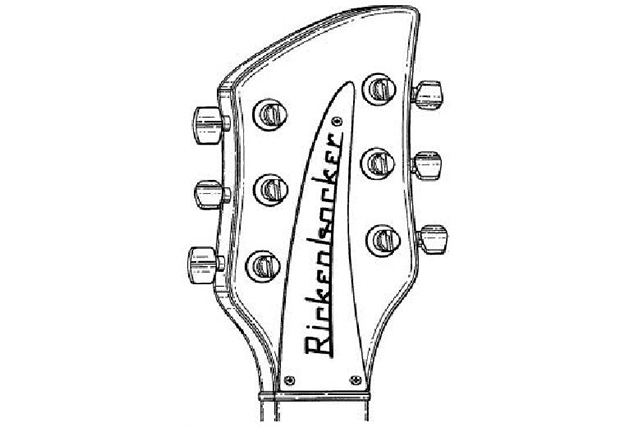
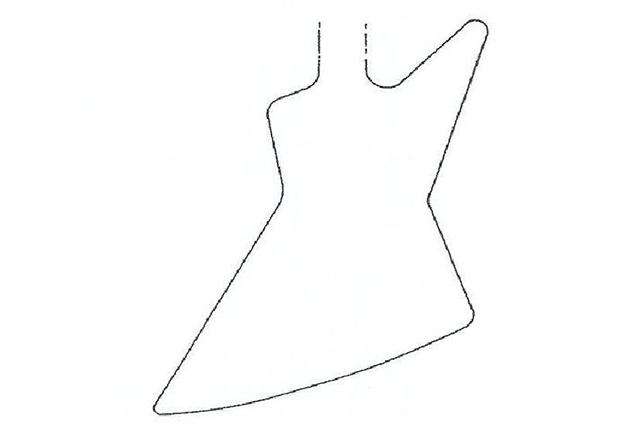
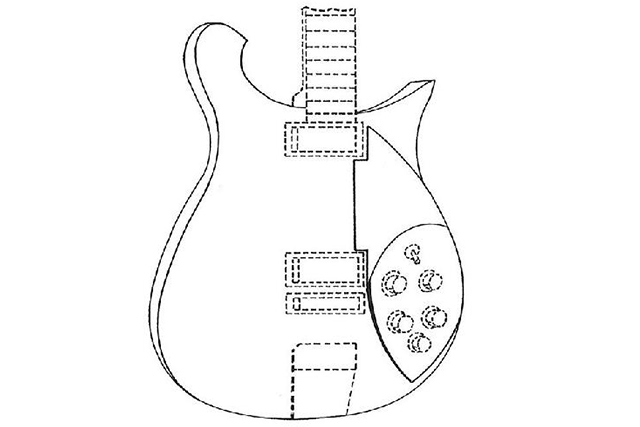
The classic triumvirate of the electric guitar

Paul McCartney with his Höfner ‘Beatles’ bass (2018)
Shortly after the Telecaster, Gibson also introduced its first solid-body electric guitar. It was created in collaboration with the then very popular guitarist Lester Polfuss and bore his stage name: Les Paul. Its body shape was modelled on the lines of a Spanish guitar, but had a cutaway. Together with the Telecaster and Stratocaster from Fender, the Gibson Les Paul is still the classic electric guitar par excellence. Almost all later electric guitars are copies or variations of these three standard models or at least heavily influenced by them.
Gibson and Les Paul also jointly designed the ‘SG’, which is still successfully produced today (popularised by Robby Krieger of the Doors and Angus Young of AC/DC, among others). Gibson also brought some ‘wild’ body shapes onto the market, such as the ‘Flying V’ or the ‘Explorer’, next to which the once so progressive Stratocaster almost looks old. Today, these guitars are mainly played by heavy metal bands. - The Höfner 500/1 bass, better known as Paul McCartney's ‘Beatles bass’, is also one of the archetypal body shapes. The manufacturer from Bubenreuth also went its own way with pickups at the time (see ![]() DE1742639U,
DE1742639U, ![]() DE1806362U).
DE1806362U).
Popular ‘PAFs’
Apart from the shape, the pickups are the main difference between the classic Fender and Gibson models. The Les Paul was originally launched with two single coil pickups (known as ‘P-90’, see ![]() US2567570A,
US2567570A, ![]() US2714326A). It was initially equipped with a combined bridge and side pickup solution (
US2714326A). It was initially equipped with a combined bridge and side pickup solution ( ![]() US2740313A), which was then replaced by Les Paul's ‘stop-tail-piece’ solution (
US2740313A), which was then replaced by Les Paul's ‘stop-tail-piece’ solution ( ![]() US2737842A). Since 1957 it has been equipped with humbuckers. The classic patent for these double-coil pickups is that of Seth Lover and Walter Fuller (
US2737842A). Since 1957 it has been equipped with humbuckers. The classic patent for these double-coil pickups is that of Seth Lover and Walter Fuller ( ![]() US2896491A). There were predecessors, but they did not succeed (e.g. Arnold Lesti US2026841, Armand Knoblaugh US2119584). Humbuckers sound richer in the middle, ‘fatter’ and wider than single coils, are - as the name suggests - hum-free, can be easily overdriven and thus produce a warm, distorted sound that is particularly appreciated by hard rock and blues guitarists (famous Les Paul players include Jimmy Page from Led Zeppelin and Slash from Guns'n Roses, as well as Bob Marley).
US2896491A). There were predecessors, but they did not succeed (e.g. Arnold Lesti US2026841, Armand Knoblaugh US2119584). Humbuckers sound richer in the middle, ‘fatter’ and wider than single coils, are - as the name suggests - hum-free, can be easily overdriven and thus produce a warm, distorted sound that is particularly appreciated by hard rock and blues guitarists (famous Les Paul players include Jimmy Page from Led Zeppelin and Slash from Guns'n Roses, as well as Bob Marley).
The first humbuckers installed in the Les Pauls bore a small sticker: ‘PAF - Patent Applied For’ (it was not granted until 1959; ![]() US2897709A). This is why some of these pickups are still called ‘PAF’ today. Old electric guitars, especially Les Pauls with ‘PAFs’, are almost priceless today.
US2897709A). This is why some of these pickups are still called ‘PAF’ today. Old electric guitars, especially Les Pauls with ‘PAFs’, are almost priceless today.
Copies and luminaries

Eric Clapton with his signature guitar from Martin (Prague 2013)
The expensive standard models from Fender and Gibson have always been diligently imitated. There are copies in all quality and price levels. Often the replicas differ only minimally from the original, for example in the shape of the headstock, the curvature of the body top or the fingerboard inlays. Gibson in particular has repeatedly tried to take legal action against overly brazen imitators (see, for example, the BGH judgement of 5 March 1998, case reference: I ZR 13/96) - with varying degrees of success.
Instrument manufacturers like to engage famous musicians as so-called ‘endorsers’, i.e. a kind of brand ambassador. Fender, for example, has already launched various Eric Clapton special editions of its Stratocaster on the market; there are several special „Slash“ editions of the Les Paul. Martin also brought out a Clapton signature model after the famous ‘Unplugged’ performance - the first acoustic ‘signature’ guitar ever. But you don't necessarily have to be a virtuoso to have your own guitar dedicated to you: Martin had a collaboration with Ed Sheeran for a while (he´s with Lowden now); competitor Taylor offers a Taylor Swift guitar.
However, some guitarists also go their own way, such as the super technician Eddie Van Halen, who built his ‘Frankenstrat’ from various guitar parts, combining single coils and humbuckers, or ‘Queen’ guitarist Brian May, who built his ‘Red Special’ himself as a teenager together with his father.
Despite all the modern technical possibilities to ‘model’ many different sounds, i.e. to call up pre-programmed sounds, and although innovations are still being constantly registered (see e.g. ![]() DE202022001270U1,
DE202022001270U1, ![]() DE202023000766U1 oder
DE202023000766U1 oder ![]() DE202024000565U1), the classic construction method established by Rickenbacker, Fender, Gibson and others in the 1950s is still predominant in electric guitars today.
DE202024000565U1), the classic construction method established by Rickenbacker, Fender, Gibson and others in the 1950s is still predominant in electric guitars today.
Logos and trade marks of famous guitar manufacturers
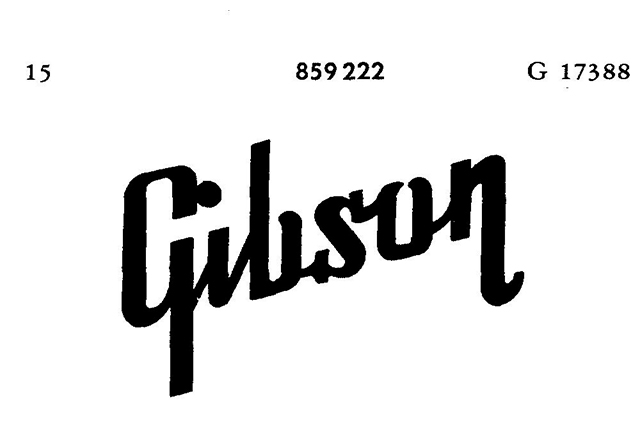

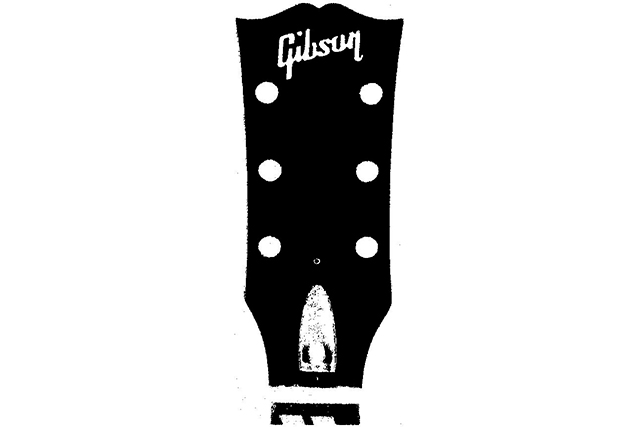
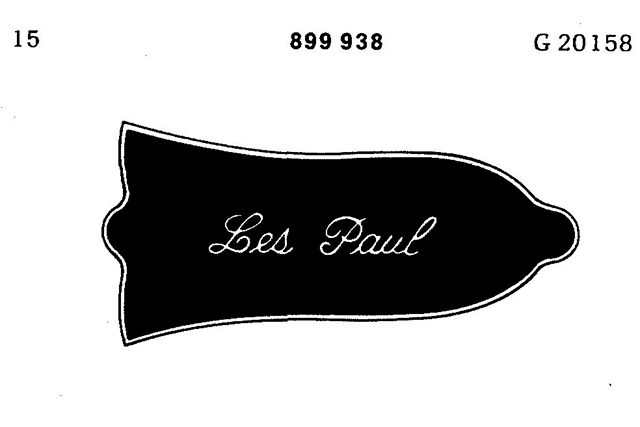
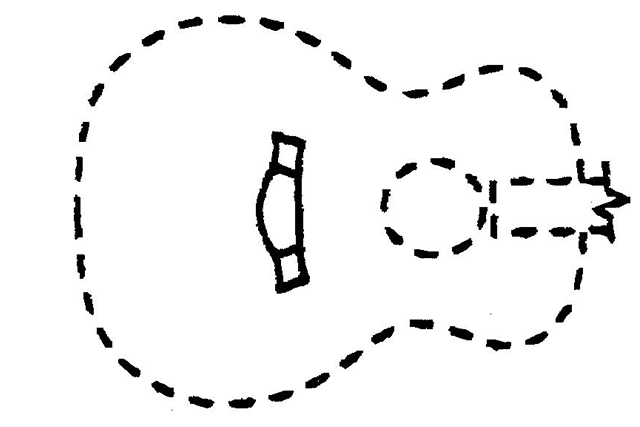
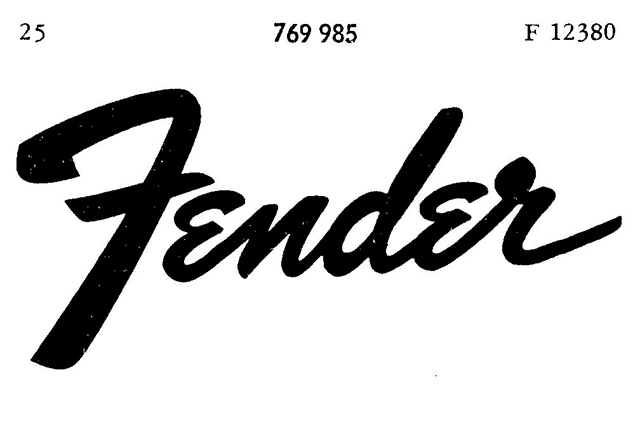

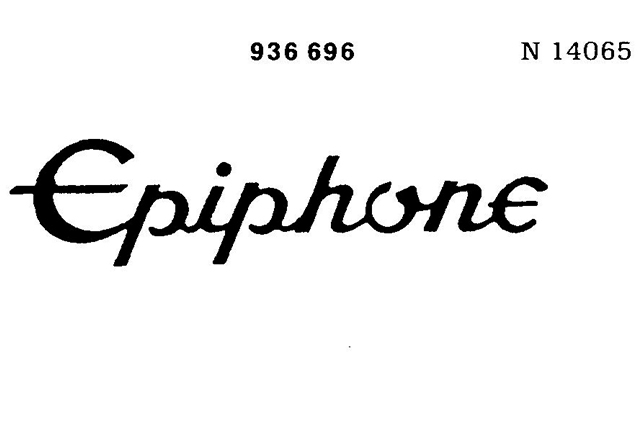
Text: Dr. Jan Björn Potthast; pictures: DEPATISnet, Museum of Making Music (Carlsbald, California) CC by 3.0 via Wikimedia Commons, Public Record Office of Northern Ireland via Wikimedia Commons, Applause magazine - Photographer unknown - Public domain via Wikimedia Commons, Steve Banks CC by SA 4.0, via Wikimedia Commons, Raph_ph CC by 2.0 via Wkimedia Commons, ETH-Bibliothek Zürich Bildarchiv Fotograf Luethy Patrick Com_l29-0351 CC by-SA 4.0 via Wikimedia Commons, Cdcoverdude CC by SA 4.0 via Wikimedia Commons, Thomas Steffan CC by-SA 3.0 via Wikimedia Commons
Last updated: 17 April 2025



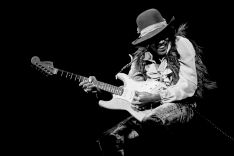
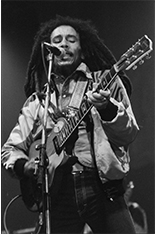

Not only protecting innovations
Social Media